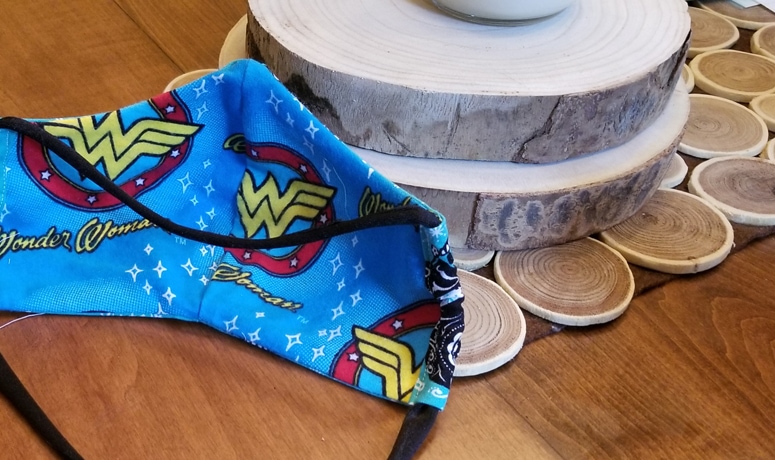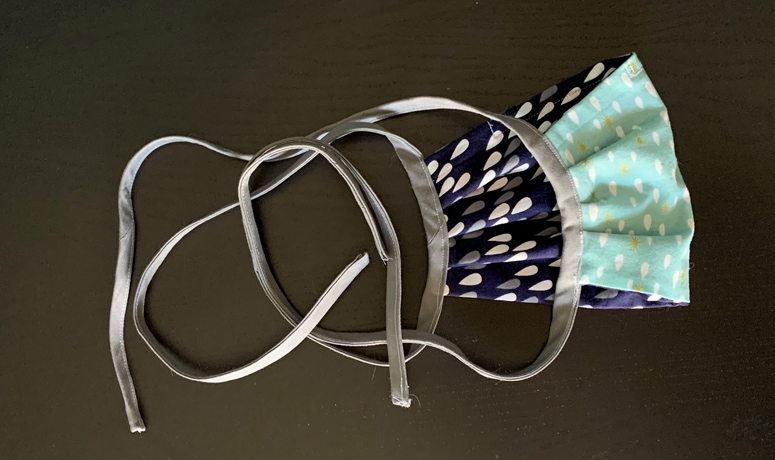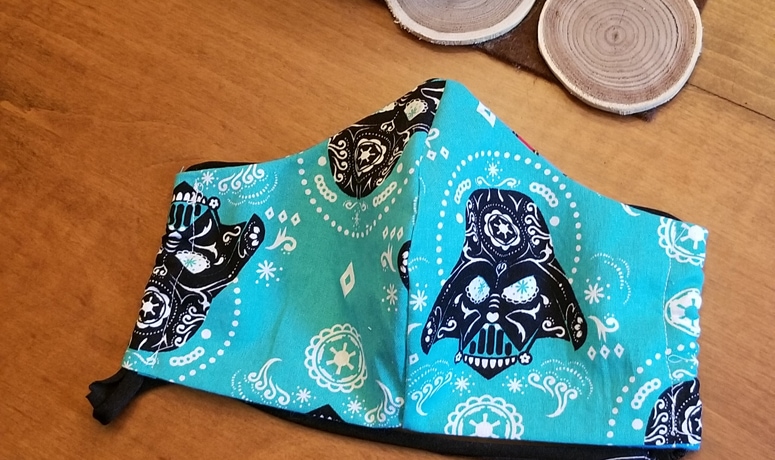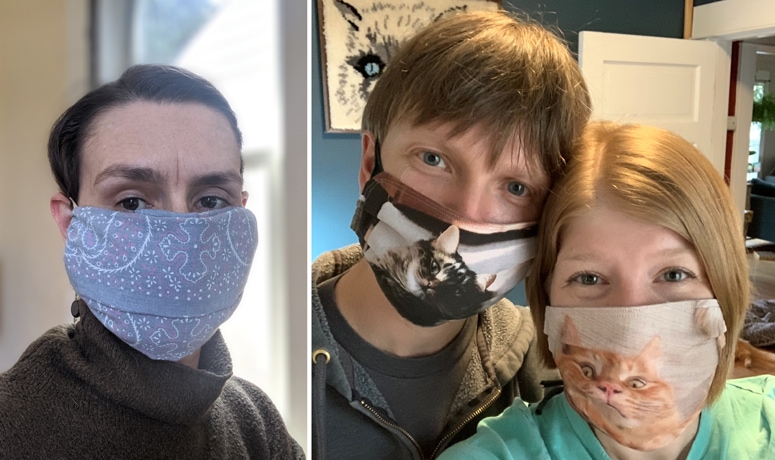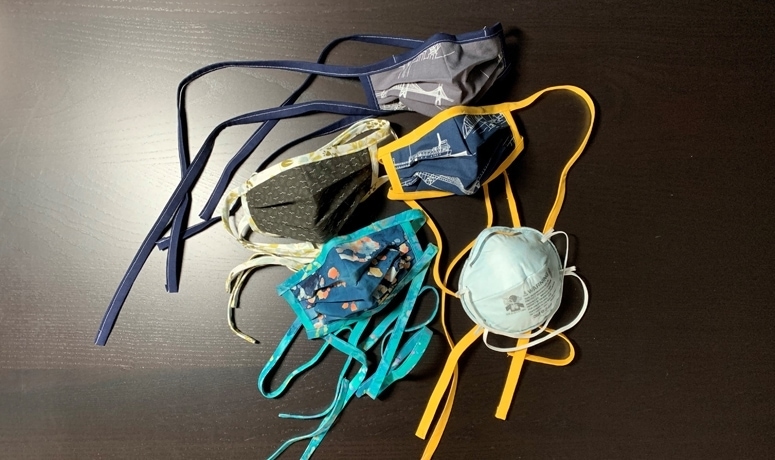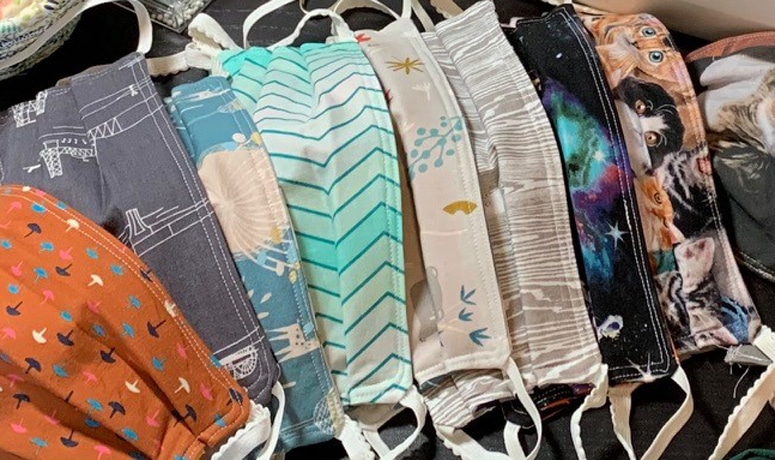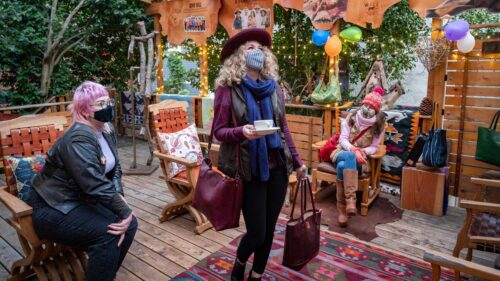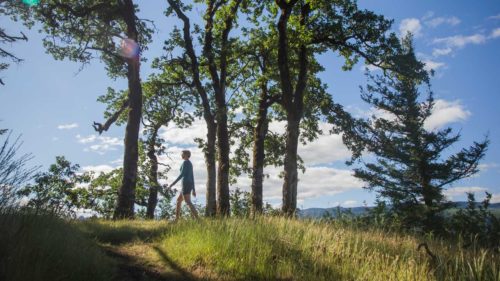In Oregon, it is required to wear face coverings while in public, indoor spaces (restaurants, bars, hotels, grocery stores, museums, etc.) and outdoors when physical distancing is not possible; exceptions include children under 5 and people with medical conditions or disabilities that prevent them from wearing a face covering.
Don’t worry if you don’t have a mask or have never made one before. They are easy to make, with or without a sewing machine.
Editor’s Note: Homemade masks are meant for personal use and are no replacement for medical grade Personal Protective Equipment (PPE). We make no claim of the effectiveness of the patterns shared below.
Getting Started
Be sure to familiarize yourself with the CDC’s guidelines for cloth face coverings. Your finished mask should:
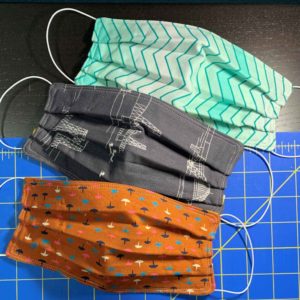
- Fit snugly but comfortably against the side of the face
- Be secured with ties or ear loops
- Include multiple layers of fabric
- Allow for breathing without restriction
- Be able to be laundered and machine dried without damage or change to shape
Fabric for Face Coverings
The internet is rich with do-it-yourself (DIY) videos and recommendations for making your own face covering. If you are making a mask for your own use, nearly any pattern will do. What matters most is that your face covering be composed of at least two layers of fabric and that you are using 100% cotton fabric when possible (the tighter the weave the better — think quilting cotton). Avoid using vintage fabric because over time textiles break down, which could render your mask ineffective. Further, it is hard to know what materials were used in the creation of older fabrics, which could also make your mask less effective.
If you don’t have 100% cotton fabric handy (or any for that matter), a t-shirt will work in a pinch. Be sure to keep reading for the no-sew option below.
Donating Face Coverings
If you are considering sewing face covering to donate to an organization, please do your homework*. You’ll want to be sure the pattern you follow is one the organization can use and that you are following guidelines about what materials to use. For example, many organizations ask that you use 100% cotton quilters-woven fabric and that you skip any wire and filter inserts (to make it easier for them to sanitize and re-purpose). Further, double-check to see whether there are specifications for what kind of ties to use (elastic or fabric) to ensure your donated masks hold up to sanitation procedures (not to mention allergies).
*This is an excellent reason to join an established mask-sewing group. Most groups provide you with patterns, guidelines on acceptable materials to use and distribution information.
Patterns for Those Who Sew
Pleated Face Coverings
The Deaconess Health mask tutorial is very popular, easy to follow and is essentially the same as the CDC pattern. You can modify it by swapping elastic banding for store bought (or homemade!) bias tape, cutting up an old knit shirt or stretch pants or using hair binders. I’ve been modifying this pattern by adding an extra layer of 100% cotton flannel in between the two layers of quilting cotton, for extra protection. While the extra layer can make sewing over the pleats a little harder, it is still manageable. If you have a quilting foot handy, pull it out, it makes sewing over multiple layers of fabric much easier.
Duckbill Masks
Similar to the pleated mask, the duckbill mask is another popular pattern with a variety of size options and modifications — like this one that uses hair binders instead of elastic. And while this tutorial isn’t exactly a duckbill pattern, it is similar and uses three layers of fabric. That last pattern also happens to be the pattern of choice of the Crafters Against COVID-19 PDX Facebook group.
Mask Cover
If you happen to have an N95 mask and want to extend the life of it, the A.B. Mask was developed to be used both as an N95 mask cover (the pleats expand to cover it) and as a face cover, similar to the previous patterns.
Editor’s Note: Consider using different colors or patterns for the the inside of your mask to ensure you wear it the same way consistently.
Patterns for Those Who Don’t Sew or Have Limited Materials
The CDC no-sew pattern is a great place to start. However, these videos show how truly easy it is to re-purpose a bandana or an old t-shirt into a face mask. All you need is a bandana (or old t-shirt), scissors and two rubber bands. If you decide to repurpose a t-shirt, a ruler may come in handy as well as a needle and thread (should you decide to get fancy).
More Inspiration
Sewn your own and feeling inspired? Great! Consider making a few more to share with family, friends and your community. Better yet, combine your efforts with an established Facebook Group. As they say, many hands make lighter work!
- Central Oregon: Central Oregon Emergency Mask Makers
- Eastern Oregon: Mama Bear’s Quilt Shop
- Portland Region: Crafters Against COVID-19 PDX
- Mt. Hood & the Gorge: Gorge Makers Collective
- North Oregon Coast: The Tillamook County Face Mask Project
- Central Oregon Coast: Coos Sand ‘n Sea Quilters Guild
- Southern Oregon: Masks & Gowns Now
- Willamette Valley: The Seamsters: Facemasks for Health Care in Eugene-Springfield, Oregon
Editor’s Note: If you know of any other Facebook Groups we should add to this list, please do let us know.
Face Coverings for Purchase
And, if you don’t fancy yourself a DIY-er, support a local maker and purchase a mask made in Oregon:
- BlaqPaks: https://blaqpaks.com/accessories/cotton-washable-face-masks
- The Dept. Store: https://www.shopdeptstore.com/collections/masks
- Handmade by Hilda: http://www.handmadebyhilda.com/masks
- Oregon makers on Etsy: https://www.etsy.com/search?q=face+mask&locationQuery=5744337
